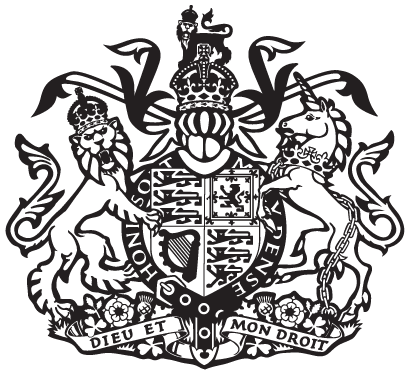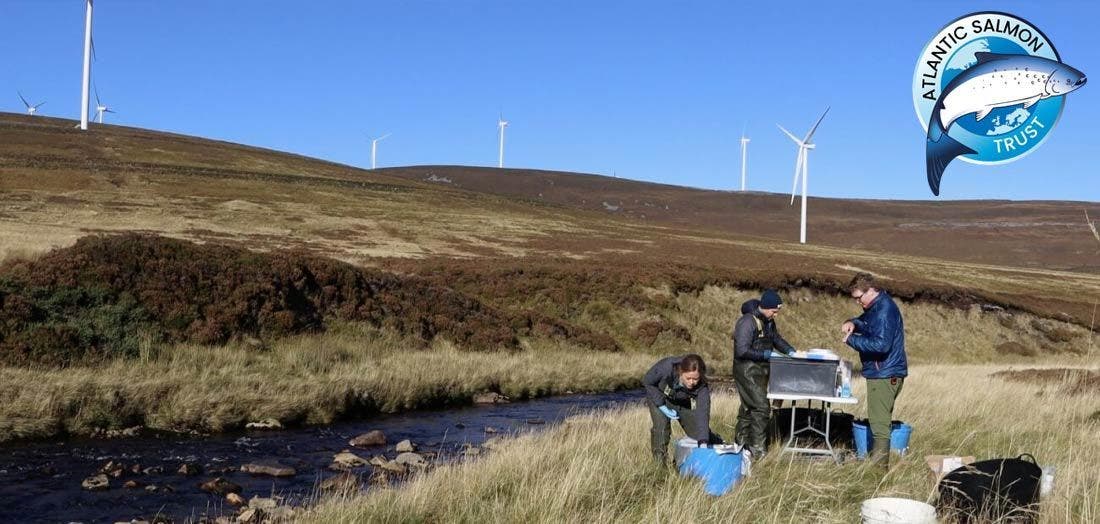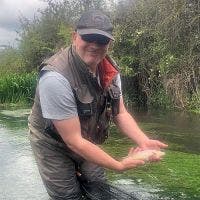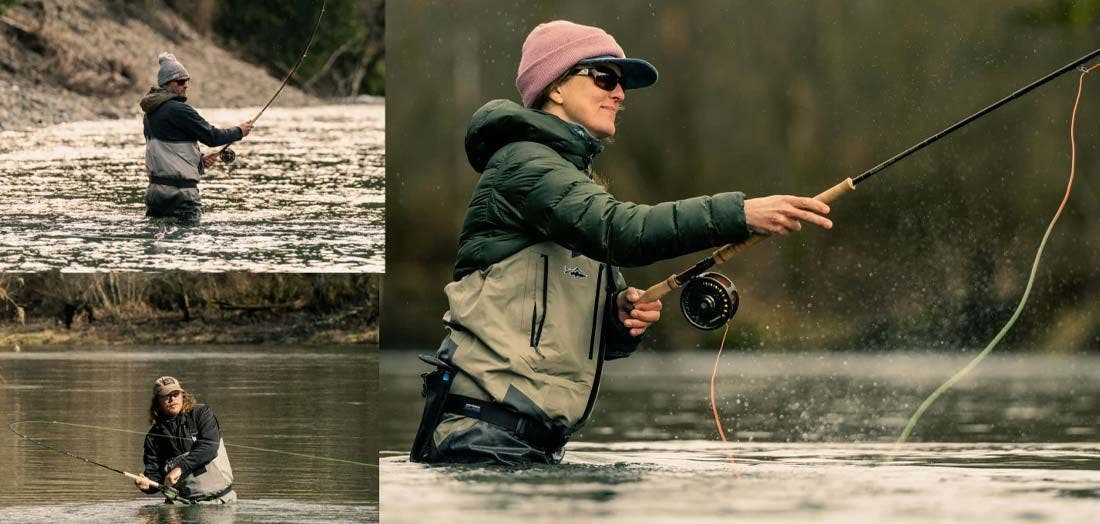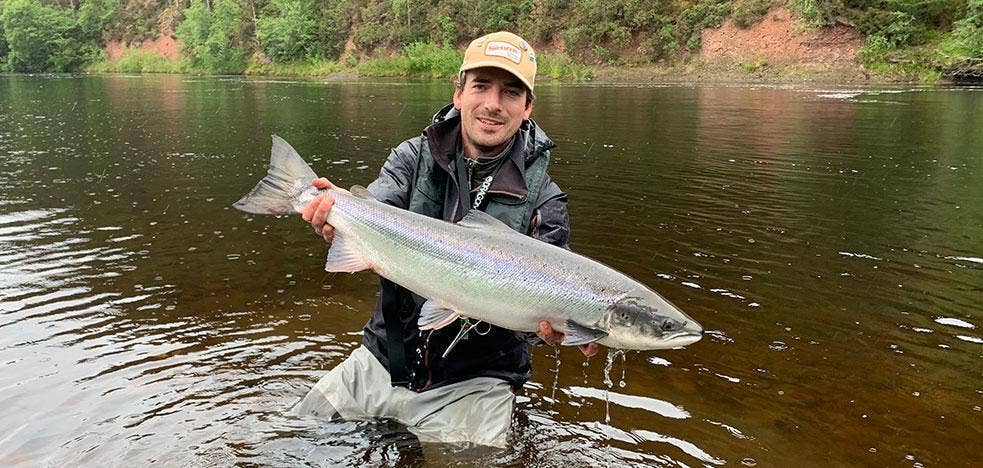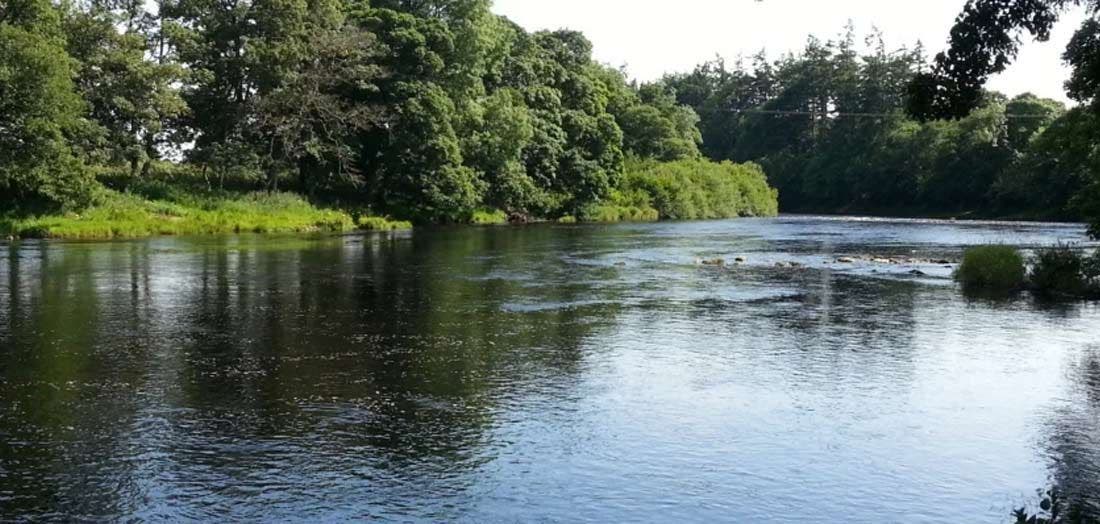Q: Hi Jonny, thanks for catching up with us, how are you?
A: Great thanks, Simon. Delighted to be able to catch up with Farlows customers. There’s lots going on at the moment in the salmon conservation world and talking directly to your angling customers is a great way to get the messages out there.
Q: Right, let’s dive straight in. What has the Atlantic Salmon Trust been up to recently?
A: We’ve undergone a big transformation in the last year. We’re perhaps best known for our research projects which aim to gather the evidence on what is causing the decline in salmon, and then deliver that evidence to managers and policymakers to act upon. However, given the urgency of the salmon crisis, we saw that we had to do more. We had to close the gap between science and action on the ground, and really play much more of a leading role in the sector. So we brought on new people and new capabilities to launch a series of catchment-scale salmon restoration projects, working in partnership with local organisations to help deliver the scale and pace of work that wild salmon need.
Q: Can you tell me more about the Deveron and Laxford Projects?
A: We call these the Core Rivers – the first of our catchment-scale restoration partnership projects to launch. Project Laxford is a partnership with Grosvenor’s Reay Forest Estate, and Project Deveron is a partnership with the Deveron, Bogie & Isla Rivers Charitable Trust.
Working with local organisations and landowners, these combine long-term habitat restoration efforts on the river and surrounding landscape with sophisticated fish monitoring. By accurately monitoring the salmon population in these systems, through PIT (Passive Integrated Transponder) tagging, sonar fish counters and environmental DNA sampling, we will be able to see how all the habitat work is affecting the salmon population, and ultimately which solutions actually work to help restore them. When these two projects got going there wasn’t a single fully monitored main river system in Scotland that was accurately counting salmon out and back in, so these two projects really are a game changer for our collective knowledge.
The PIT tagging programme is especially fascinating – these are small microchips about the size of a grain of rice (and the same technology used to chip a pet dog or cat), which we implant into around 2000 salmon parr from each river each autumn. As they don’t require a battery to work, they will stay with the fish for its entire life and will ping the antennae we have positioned in the river whenever the fish swims past one. This means we can see when our parr ‘smolt’ and go to sea, how many return as grilse or multi-sea winter salmon, and even if any become repeat-spawners. This is also going to give us a really good understanding of marine survival rates, as well as how the salmon population is influenced by the habitat work.




Q: What are the Moray Firth and West Coast Tracking Projects?
A: These are two high-profile acoustic smolt tracking projects which have both now finished their 3 fieldwork years and are now in the data analysis stage. The Moray Firth Tracking Project tagged smolts from 7 rivers draining into the Moray Firth to learn more about what was happening to smolts during their downstream migration to sea, how many were making that journey successfully and how we can help them. The West Coast Tracking Project, which is a partnership with Fisheries Management Scotland and the Marine Directorate, tagged smolts from 11 rivers on the West Coast to learn more about how these fish are navigating through our coastal waters – this knowledge is really important to have and will inform processes taking place to regulate aquaculture and other marine developments.
Some of the preliminary results from these projects can be found our website, but the detailed analysis is still ongoing.




Q: Can you explain a bit about the Likely Suspects Framework and the Missing Salmon Alliance?
A: The Likely Suspects Framework is an amazing piece of data-modelling work being developed by some incredible people – seriously brilliant minds and some of the best in the world. It’s very complex, but essentially it’s a software tool that aims to model the impacts of various pressures on wild Atlantic salmon at different stages of their lifecycle. This has enormous potential in helping river managers understand how these pressures interact with their own river’s salmon population, help them decide which issues are having the greatest impact at each salmon lifestage, how this affects their overall population, and therefore which pressures they should focus their energies on tackling. I like to think of it as a targeting tool – we all know there are a multitude of factors impacting salmon, but if we can help managers to focus in on the ones that will make the biggest difference to their population, we can start to have a positive effect for our wild salmon overall.
This work is a combined effort with the Missing Salmon Alliance – a collective of organisations from across the UK working together to combine their skills and resources to restore wild Atlantic salmon. Together we have skills in research, restoration, advocacy, campaigning, and the law. The members are the Atlantic Salmon Trust, Rivers Trust, Angling Trust, Game & Wildlife Conservation Trust, Fish Legal, and Fisheries Management Scotland.
Q: Please can you tell me about “cold clean water”?
A: This is quite simply what wild Atlantic salmon need, and what the Core Rivers partnership projects aim to deliver at a catchment scale. Our world, its climate and its weather are changing, and we need to do everything we can to give wild salmon these key ingredients if they are to have a thriving future. They need cold water free from thermal stress, clean water free from disease, parasites and with plenty of invertebrate food, and finally they need water – the right amount of it and with free access to it. Everything we’re doing in terms of the habitat work on the Core Rivers is geared around delivering cold, clean water. It’s not just salmon who need it either, but also other wildlife and people – that’s one of the key messages that can help this work to resonate with a wider public.
Cold Clean Water is also the name of a short film that we shot on Project Deveron late last year with actors Dominic West and Jim Murray.
Q: How has the short film featuring AST Ambassadors and actors Jim Murray and Dominic West been received?
A: The film has gone down really well, and has been shown on national television (Alan Tichmarsh’s ITV talk show), at a screening in London, and of course online. Jim is a fantastically active ambassador for the Atlantic Salmon Trust and we were delighted that he brought Dominic along to help make the film. These two guys have serious public profile and we can’t thank them both enough for giving up their time and energy to highlight the plight of wild Atlantic salmon.


Q: Salmon in much of Great Britain were reclassified last year as an endangered species, how has that impacted AST?
A: It was an unfortunate milestone for the species to reach and really paints a picture of how serious the salmon crisis is. We’ve gone from abundance to endangered in just a few decades. We hope that the reclassification helps to get across to Governments and Regulators that they must urgently do more to halt and reverse the salmon decline.
Q: What are the AST’s “5 goals for 5 years”?
A: We launched a new strategy last year which is focused on restoring the species in the long-term and that’s why the Core Rivers programme is so focused on landscape-scale habitat restoration. We’ve also recently launched ‘Save the Spring’ in partnership with the River Dee which is setting out a 20-year programme of work to restore the river’s iconic spring-run salmon. However we recognise that short term goals are essential too, given that the species is now endangered. We set these out on our website but they are:
- Define why salmon are declining and continue to fill knowledge gaps – including what is happening to salmon at sea.
- Identify and prioritise the manageable pressures influencing that decline and publish up-to-date reports on the effectiveness of various management interventions, for example hatcheries and predation management, to provide greater clarity in the sector.
- Design and conduct a catchment audit process on the Core Rivers and then roll out a suite of landscape-scale restoration solutions.
- Demonstrate that these solutions are working through environmental monitoring on the Core Rivers and report these results back.
- Create a network of catchment partnerships to help roll out these solutions at scale.
I’m pleased to say we’re already making good progress on these as 2023 was a year that we really forged ahead with the catchment restoration partnerships. Goals 1 and 2 are very much linked to the Likely Suspects Framework which completed its proof of concept last year and the team are now working on the first version of the software tool.


Q: How is the AST changing from a strategic perspective and what are your biggest challenges?
A: I mentioned earlier that we went through a huge strategic change last year – our new strategy is defined by three words: Evidence, Solutions, Partnership – this is what defines us and how we work. Gathering the evidence, designing the solutions, and then working with partners to enable action to happen on the ground in river catchments at scale. Working at a landscape scale naturally leads you into the realm of climate change and biodiversity loss – salmon cannot be viewed in isolation but are part of a much wider ecosystem under pressure from this global ‘twin crisis’. One of our ongoing challenges is making sure that salmon restoration is central to efforts from our wider society to provide climate resilience and rebuild biodiversity. We need to make the case for salmon to be the focus – they are an indicator species and if we get it right for them, we get it right for everything else. Salmon restoration can’t just be viewed through a fishing lens.
There are also of course huge challenges when working with regulation and legislation, much of which doesn’t adequately protect wild salmon. That’s where the Missing Salmon Alliance really has power to lobby for change at a high level.
Q: How can we as anglers help?
A: Firstly, support us! Become a monthly member, donate to us, and help us continue to push our work forward. We simply couldn’t operate without our supporters and we need more of them if we are to expand the network of river partnerships to achieve the scale and pace of change that wild salmon need.
Secondly, follow, like and share – sign up to our newsletter, follow us on social and help us spread awareness of the urgent need to restore wild Atlantic salmon and their environment.
Thirdly, and I say this as an angler myself, be positive! I know the situation is bad for salmon, but there’s far too much doom and gloom around in our community, finger-pointing, defeatism and despair. There are a lot of good people working hard on restoring the King of Fish, not just in my own organisation but in many others too, and we all need the angling community to get behind those efforts with encouragement and positivity, otherwise we won’t get very far. The angling community has an immensely important voice and we need its support. We need it to use that voice to amplify and encourage the positive solutions.


Q: How was your salmon fishing season last year and what are you looking forward to this year?
A: Poor, like everyone else’s! I managed 3 fish on the Tay, my home river, and a fish on the Helmsdale and that was it for 14 days of fishing - not good at all. Of course being on the water is always a pleasure, but it was clear that last year’s run was really quite poor. This year I’ve said to myself that I’m going to spend more time trying to film wild salmon underwater after some unsuccessful attempts in the past, so I’m looking forward to having another crack at that. Hopefully I’ll have some inspiring footage to share with you later in the year!
We hope you enjoyed reading this Q&A with The Atlantic Salmon Trust. If you have any questions, thoughts or ideas for the AST or Farlows teams, please leave a comment below and we will respond.
